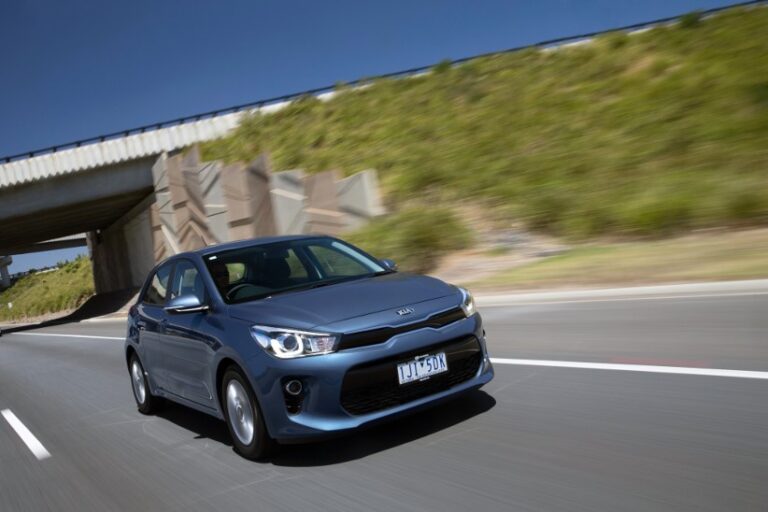– By David Brown –
Kia’s small car, the Rio, use to be its most popular model. In fact Kia was once seen as the “Rio” company in the same way that Hyundai was once known as the company that produced the Excel.
In has been quite a trend for car companies to break into the market with a small vehicle aimed at cheap motoring and only later to broaden its fleet with a wider range of vehicles. Think of Toyota with the Corolla and Volkswagen with the Beetle. Going back even further there was the Model T and even a little before that with the Oldsmobile and their Curved Dash.
Ransom E Olds started his company in 1897 and is believed to be the person who invented the production line for automobiles. Henry Ford then mechanised it to a much greater extent and the rest is history.
That Oldsmobile build their name on the small Curved Dash was a case of serendipity. By 1901 they had prepared a wide range of prototype models, many of them quite large vehicles. But in that year the factory burned down and all was lost except a working model of the little Curved Dash.
Even if a company expands it range it doesn’t want to forget the models that helped it get started.
The Rio is currently the third bestselling Kia model in the Australia market (behind their Cerato and Sportage) and Kia hopes the new version will help it to continue its recent spectacular growth.
The B segment for passenger cars, in which the Rio competes, has not been doing well of late. In 2016 the sales were down 16%. The only companies to increase their sales in 2016 were the top selling Hyundai Accent with 18,703 vehicles representing a massive 71% increase and the lowly placed Skoda Fabia in 14th position with 857 vehicles representing a 39% increase. Rio was doing well mid-year but sales dropped off when the supply of the older model started to run out.
The new model is the fourth-generation and is longer and wider but a little lower than the model it replaces. For a car in this segment there is good space for passengers and a 325 litre boot (up 37 litres). The earlier Rio models were not great looking but this version continues the recent trend of Kia of producing very stylish vehicles. I think the car looks much better in the flesh and pictures don’t do it full justice.
The interior has a simplicity about it with a 7-inch touchscreen standard on all three specification levels. The speedo and rev counter dials for the driver are big and the extra information that can be displayed between them is very easy to read. In many cars the quest for detail can make the numbers difficult to comprehend.
For the first time the Rio also has a digital speedo display which I like a lot.
A 1.4-litre four cylinder with 74kW and 133Nm is only engine available. You have to ring the neck of the engine to get the most out of it as the maximum power comes in at 6000rpm and the maximum torque at 4000rpm
You can get a six speed manual in the base model but the lack of power is exacerbated if you get the automatic (available in all specifications) which is only a four speed.
The car is quiet and comfortable and easy to drive around the city and it can keep up its pace on a motor way but on roads in between its limitations become apparent. I drove the car on some country roads that have only one lane in each direction. I overtook a car that was doing about 10-15 km/hr below the speed limit. I think they sped up a bit when I moved out to overtake but irrespective of this it was not a quick or comfortable experience.
Pulling out from a side street where the car quickly drops into second gear but then seems to take an eternity to build up speed in the a gear that has to cover a wide range of speeds.
From the safety perspective I particularly like that the new Rio has a reversing camera and parking sensors in all variations. Similarly, to enhance connectivity it has Apple Car Alay and android car play so that you can play you own music and operate the sound system with the familiar controls of your phone displayed on the cars screen.
Recommended retail prices without on-road costs start at $16,990 for the S manual. The automatic is $19,090. The mid-range Si which is only available in automatic and is $21,490 while the top of the range SLi (only in automatic) is $22,990.
Kia did have a launch price for the base model automatic of $17,490 drive away which ended on January 31 2017.
I ask Kia’s COO Damian Meredith if he would swap the rear view camera for a six speed automatic and he said definitely not. I guess he had to say that given that is what they are offering but I think it sums up where the car will find its natural home: inner city where parking is an issue rather than on Australia’s rural road system.






